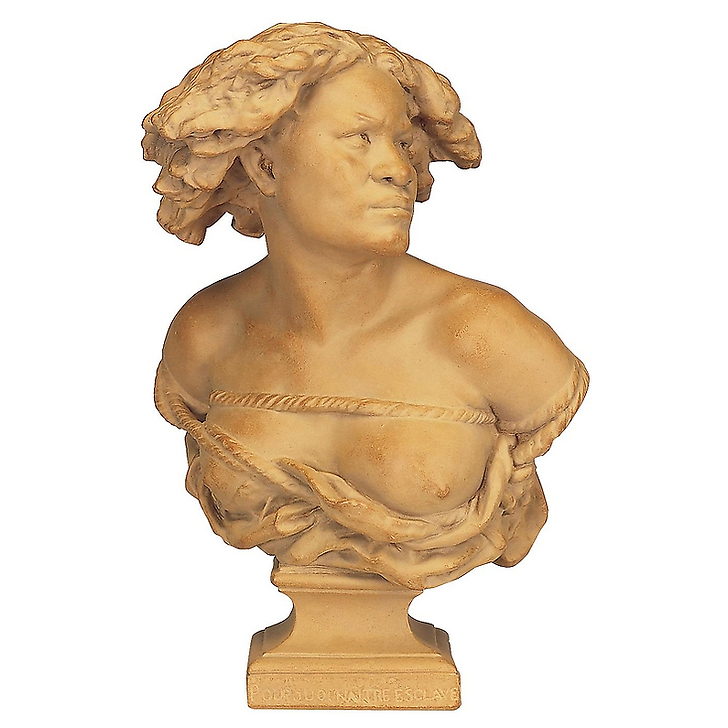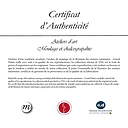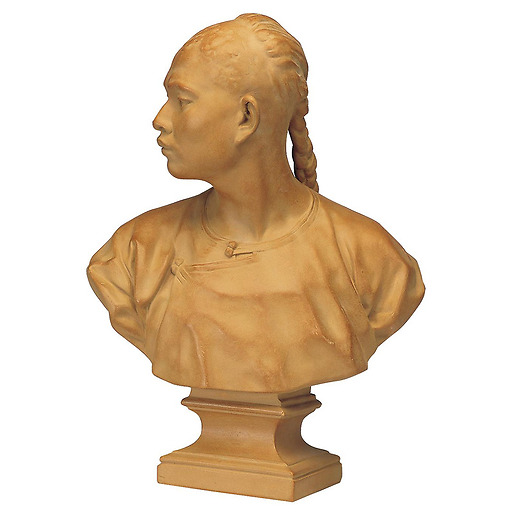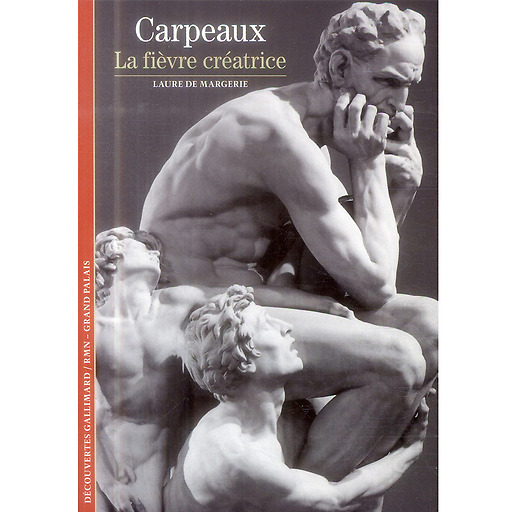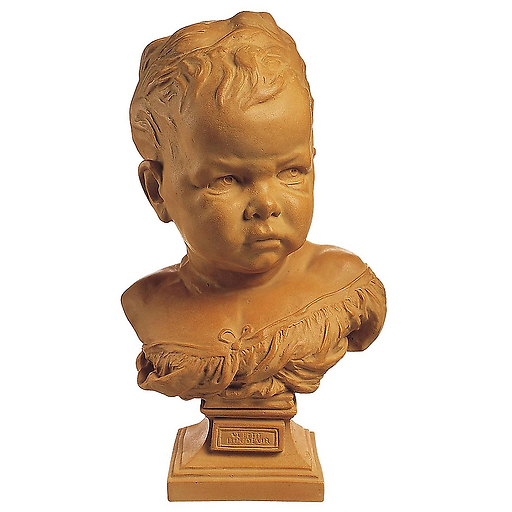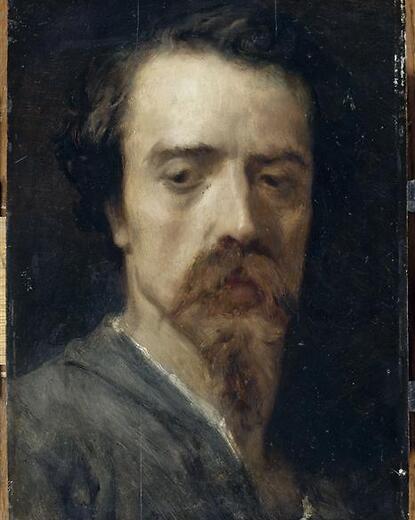Reproduction patinated by hand. Mould made from an imprint of the original work.
In 1867, Carpeaux received from the city of Paris the order for the observatory's fountain, the imposed subject, the four cardinal points. He found the idea of figures spinning around thinking about the rotation of the...
Read more
Reproduction patinated by hand. Mould made from an imprint of the original work.
In 1867, Carpeaux received from the city of Paris the order for the observatory's fountain, the imposed subject, the four cardinal points. He found the idea of figures spinning around thinking about the rotation of the earth, which led him to evoke the different ethnic groups that inhabit it.
During his studies for the fountain, he executed the busts of the "Negress", the "Chinese" and the "European". The marble of the bust of the "Why be born a slave? Or a "Captive Negress", exhibited at the 1869 Salon, was acquired by the Emperor and placed at the Château de Saint-Cloud. Carpeaux retained ownership of his model, which he often published in all materials (marble, bronze, terracotta, plaster). The Manufacture of Sèvres offered it as a biscuit. The fame of this model was due to the beauty of the expression. Carpeaux put his science of movement at the service of an idea.
Contained by links, the bust remains motionless, only the neck, face, hair escape the shackles.
By their oblique twist, they express the revolt contained in the simple question: Why be born a slave?
Close

